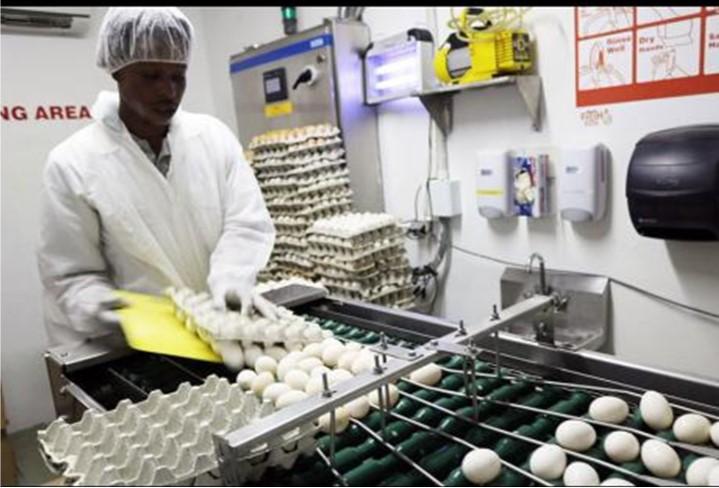Prospects For Export-Led Growth In Jamaica
Prospects For Export-Led Growth In Jamaica
Jamaica’s historical economic performance and current reality indicate that all other things considered, the only lever we have to drive significant and sustained increases in growth above the anaemic 1% to 2% that we have managed, at best, over the last two decades is through increases in our net exports.
As a country, we need to decide whether achieving sustained export-led growth is important. If so, we need to ask where it falls within our national priorities. Is a focus on export-led growth even mentioned within our national growth strategy as a major
driver? Or is the strategy only focused on driving foreign direct investments (FDI), growing our hotel room numbers, building out the Special Economic Zones (SEZs), the JISCO investment in St Elizabeth and BPOs?
Over the last 15 years, Jamaica had high levels of FDI of US$867m, US$1,440m, and US$925m in 2007, 2008, and 2015, respectively. GDP growth in these years was 1.4%, -0.8%, and 1.0%, respectively.
In 2016 and 2017, FDI was US$928m and US$888m, with growth rates of 1.5% and 0.5%, respectively. In other words, the highest levels of FDI that we have had in the recent past did not result in significantly enhanced growth, with the positive correlation between GDP growth and FDI being very weak.
Our history has shown us, therefore, that while important, these investments and projects are unlikely to significantly alter our growth trajectory without also having a significant export component, accompanied by deep linkages to the domestic economy.
We hear talk about agriculture and the importance of agriculture. Where is the comprehensive modern, forward-looking agricultural development plan? If we take out the oil-import component from our trade deficit, would the deficit still be as significant? Why do we have such a massive trade deficit that continues to rise? How do we intend to finance our economy going forward? More borrowings? More taxes? Is that not what all governments have done, certainly for the last 30 years or so? What has been the outcome?
This is the real crux of our economic challenge, and even a cursory analysis would suggest that export-led growth should be the major thrust of our entire economic programme. But is it?
Since the Seaga administration in the 1980s, no government has had a specific, focused, targeted policy and supporting programmes as well as the attendant budgetary allocations to grow our exports. The Government in the 1990s undertook an extensive process to develop a national industrial policy (NIP) in which many of us we’re involved. This was a very hopeful time, as the process was led by the minister of finance at the time, Hugh Small, and had an excellent team of technocrats, including Professor Donald Harris, who did exceptional work on defining the options for our exports and elements of an export strategy. His work clearly showed the economic benefits that we would derive from shifting our focus to export-led growth. Unfortunately, this did not materialise’
We have subsequently had the National Export Strategy (NES), which was launched in 2009 and which was developed through public-private-sector partnership led jointly by JAMPRO and the JEA. It had some success, but failed to achieve its goals, largely because of under-resourcing by successive Governments. The second version of the strategy, NES 2015-2019, was launched in 2015.
One of the overarching goals of the NES 2015-2019 is to grow exports at an average of 15% per annum to bring export levels (dollar value) to the pre-recession level of 2008-2009 (i.e., US$5.2 billion). At the targeted rate, export of goods should have got back to US$2.3b by this year. Clearly, this has not happened. Again, this is largely because of a lack of focus on it by the government and inadequate provision of resources to JAMPRO and the JEA to make it a reality.
EXPORT GROWTH PROSPECTS
We have looked at the issues that have led us to where we are, but what about the prospects for us to do better? There are several fairly immediate approaches that can lead to a near-term change in our export trajectory, many of which have been presented to successive governments before.
Beverages, seafood, baked goods, yam, and selected agricultural produce and sauces are among the products that have led the consistent growth of the food component of our non-traditional exports even while other exports were declining. In fact, some categories have increased by well over 50 per cent over the last five years. Nevertheless, while this might sound good, how does it compare with other exporters in the region and globally?
In the area of sauces, Guyana has doubled their sauce exports in the last three years, Barbados gets up to US$1 on average more per unit than we do, and the Dominican Republic (DR) exported US$92m in 2016, while we do a meagre US$19.2m by comparison.
Beverages in the categories that we export are growing at well over 30% per annum, with exports from Barbados and the DR growing at between 45% and 80% over the last several years, and, for countries like Zambia and Tanzania, growing at 130% and 380% in 2014, respectively. Our baked goods (cakes, buns, biscuits, etc.) are also showing consistent growth and can grow at much faster rates as also are our seafood exports, driven by the performance of firms such as Rainforest Seafoods, B&D Trawling, and others. In general, then, we can do much better than we are doing at the moment.
EXERCISING OUR OPTIONS
While we have shown consistent improvement in some areas, what is required is a coherent, comprehensive programme like that outlined in the NES, implemented in a disciplined manner to meet the targets we have set. This could build on the platform that has been set for us to really produce moderate to high sustainable economic growth by the decades of sacrifices that Jamaican people have made to get to where our national finances are today.
However, this will only happen if we have the right strategies, chosen on the basis of empirical evidence and facts, and supported with appropriate human and financial resources. In other words, unless the NES and other accompanying export-driven programmes are provided with the resources needed and made a national priority, we will continue to suffer in vain.
We have real possibilities for significantly expanding export-linked manufacturing [AG1] and agriculture. This could also include the new cannabis industries. We also have significant opportunities to grow our service exports. Have we benefited from having Usain Bolt, Veronica Campbell Brown, and other athletes being known all over the world? Have we formed strategic alliances with our musicians for our mutual benefit, Bob Marley and other music pioneers having given Jamaica a gift horse in our music?
These are all areas in which we have significant advantages and in which we can derive near-term success. From these and other targeted sectors mentioned above, as well as others outlined in the NES, we can get quick, sustained, and mutually growth-reinforcing wins.
It is clear, therefore, that Jamaica has numerous opportunities and avenues through which we can achieve real sustainable economic growth and positively impact our current social circumstances. All of these approaches, programmes, and opportunities remain available to us. It is for us to make use of them and have them impact our future in a more meaningful way. We now need to move from talk to action.
As citizens of Jamaica who have sacrificed much, we must stop accepting the blandishment and empty speeches from our political leaders of whatever stripe and demand hard answers, backed by evidence of seriousness. We must demand performance, not platitudes. We must demand that we get firm, measurable outputs from carefully developed programmes and demand that they are properly funded. This is the only way we can evaluate, and, if required, hold the persons responsible for failing us in their stewardship of our collective future.
Gone must be the day where we accept non-performance and mediocrity as the norm and accept PR as a substitute for real tangible performance. This has led us over many years to where we are! We need to demand
that creating and facilitating a significant and sustained expansion in net exports becomes a central strategy of the current and all future governments’ economic programme.
Only then will we begin to see the creation of a virtuous cycle of positively reinforcing economic activities and fulfil the duty of our generation: to leave an economically strong, growing, truly independent Jamaica that is the place of choice to live and do business, for the benefit of all Jamaicans.





